Garden Ideas with Retaining Walls: Transform Your Outdoor Space
Transforming your garden into a beautiful, functional space can be achievable with the right design elements. Retaining walls are a perfect solution to manage sloped areas while adding visual interest. These structures not only prevent soil erosion but also create distinct zones in your garden where you can showcase various plants and landscaping features.

Wondering how you can incorporate retaining walls into your garden? With various materials and designs to choose from, retaining walls can suit any style, whether modern, rustic, or traditional. You’ll find that retaining walls offer both practical benefits and aesthetic appeal, making them a great addition to your outdoor space.
1) Terraced Stone Planters

Terraced stone planters are a great way to add texture and depth to your garden. Using natural stone gives your space a rustic, timeless look. The stones can be arranged in different patterns to fit the style of your garden.
These planters are perfect for growing a variety of plants. You can mix flowers, herbs, and vegetables. The tiers make it easy to organize and access your plants.
Building terraced stone planters can also help with drainage. Each level retains soil and water better, ensuring your plants thrive.
2) Wooden Retaining Wall with Flower Beds
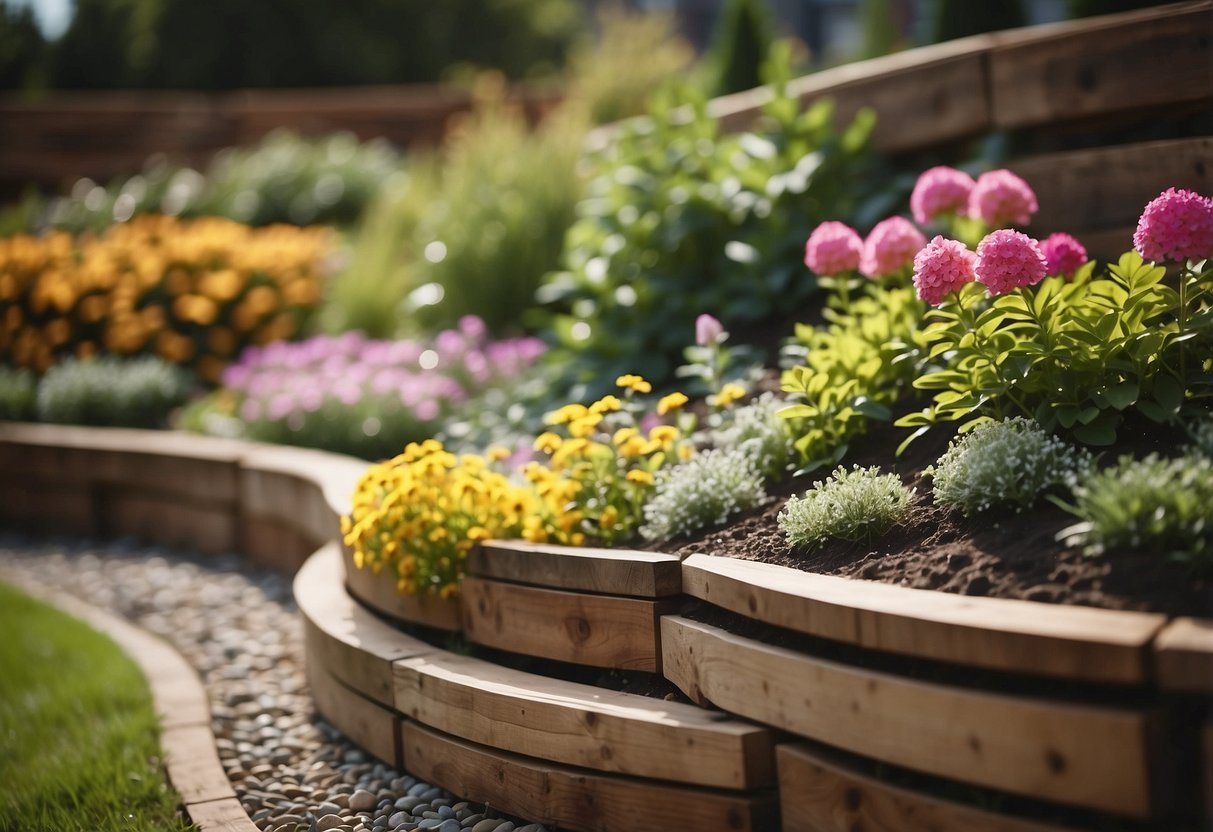
A wooden retaining wall is a great way to add charm to your garden. It looks natural and blends well with plants.
You can build the wall using treated timbers or railroad ties. Make sure the wood is durable and can handle the weather.
Flower beds at the top of the wall add color and life to the space. Choose a mix of flowers that bloom in different seasons to keep your garden lively throughout the year.
Wooden walls are also easier to install compared to stone or concrete. They require basic tools and can be a fun DIY project.
3) Multi-Level Garden Steps
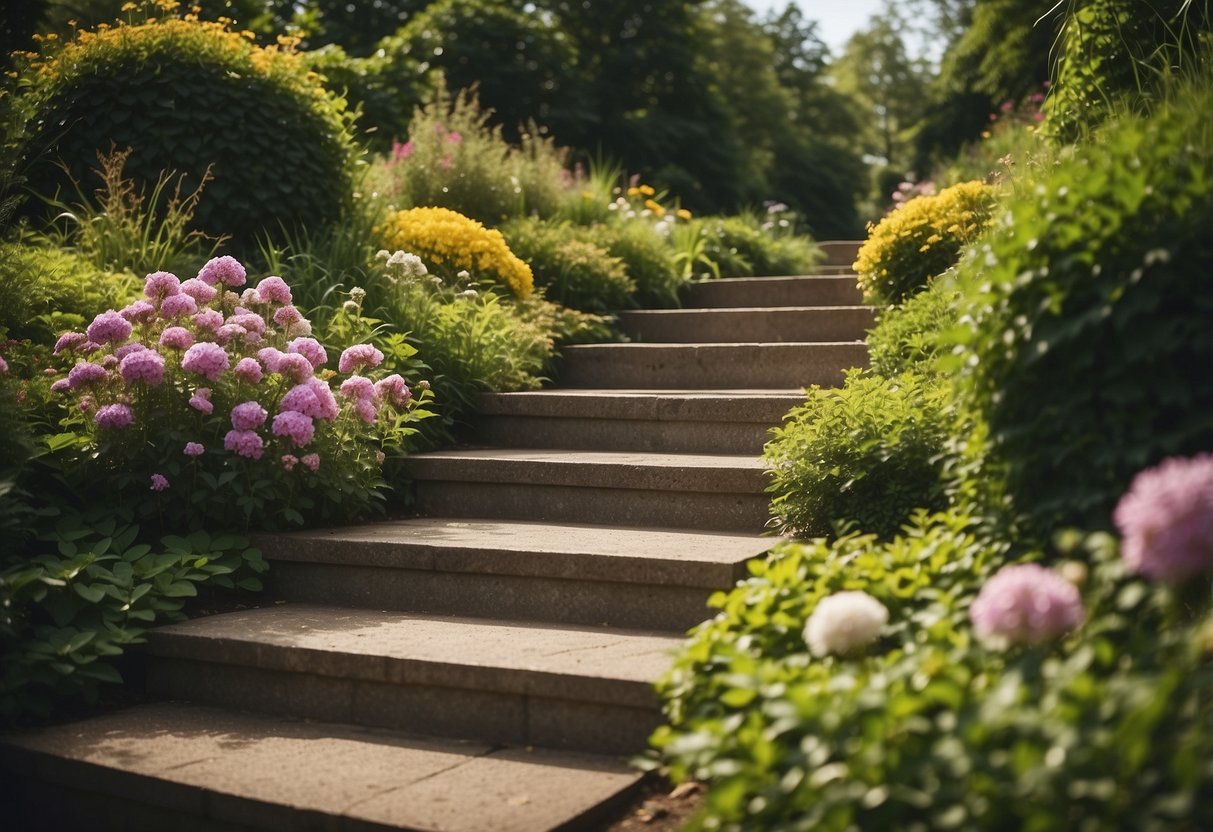
Multi-level garden steps can add depth and charm to your outdoor space. They help you navigate different levels smoothly, creating an interesting layout.
Using floating timber steps gives your garden a modern and sleek look. Timber brings natural warmth and beauty.
Accentuate the steps with lush plants or colorful flowers. This not only enhances the visual appeal but also creates a welcoming atmosphere.
4) Cascading Waterfall Feature

Adding a cascading waterfall feature to your retaining wall can transform your garden into a peaceful retreat. Imagine water gently flowing down the wall, creating soothing sounds that enhance relaxation.
You can use natural stones for a more organic look. It’s a beautiful way to blend with your garden’s plants and flowers.
Not only does it add beauty, but it also creates a focal point that draws attention. Check out some ideas for backyard waterfalls to get inspired.
5) Tiered Vegetable Garden
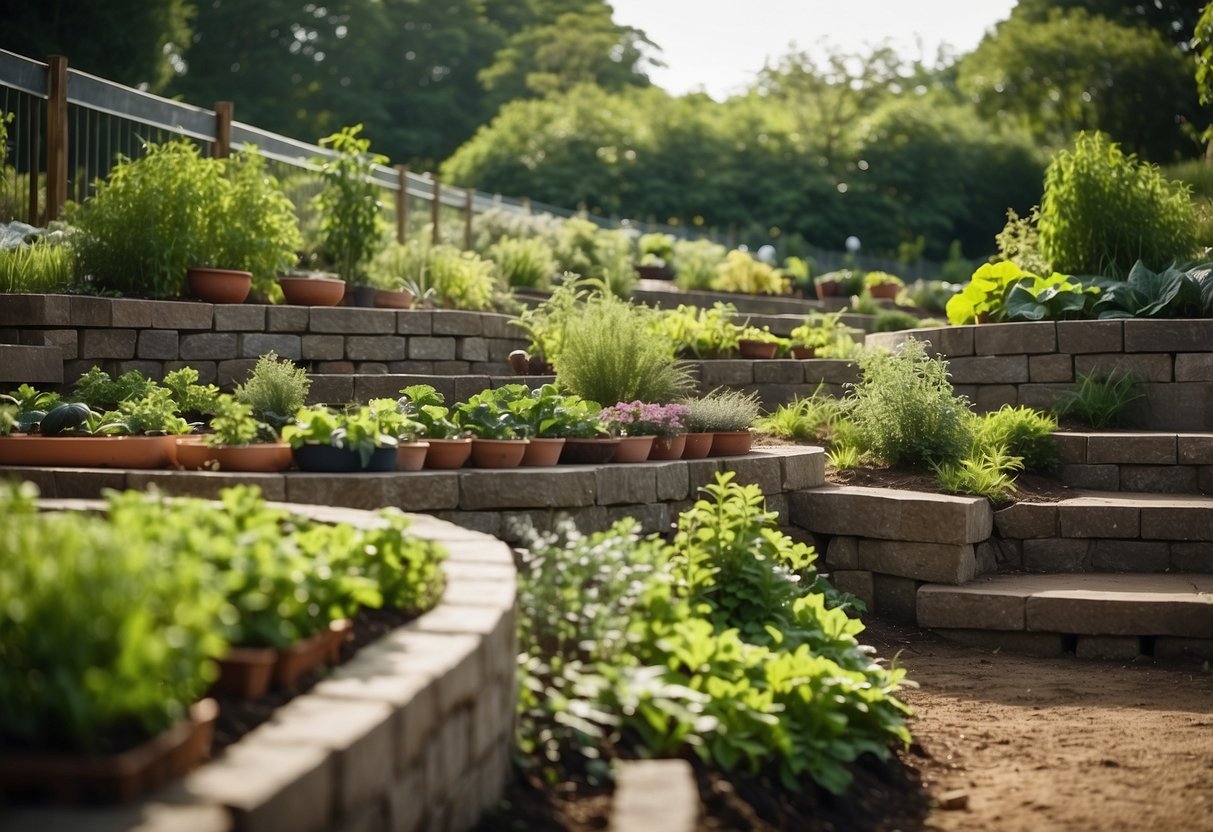
A tiered vegetable garden can transform your outdoor space into a productive oasis. By stacking garden beds on different levels, you maximize planting area and improve drainage. This design is perfect for growing more veggies in a smaller space.
Using a tiered retaining wall allows for better soil management and reduces erosion. You can build these walls using materials like wood, stone, or concrete blocks. It’s a great way to add depth and visual interest to your garden while making it easier to manage each planting bed.
6) Stone Bench Seating Area

A stone bench seating area creates a cozy spot in your garden. You can build the bench into your retaining wall.
This not only provides extra seating but also blends seamlessly with the landscape.
Using natural stone gives a rustic and timeless look. You can enjoy your garden while sitting on a sturdy, stylish bench.
7) Curved Brick Retaining Walls

Curved brick retaining walls add a beautiful touch to your garden. These walls can help create a sense of flow and movement. They are especially useful for gardens with slopes.
Curved designs can be a stunning feature. They also provide strong support. Look at designs from Houzz that curve around spaces beautifully.
Adding curves can make your garden feel more organic and less rigid, enhancing your outdoor space.
8) Layered Rose Garden
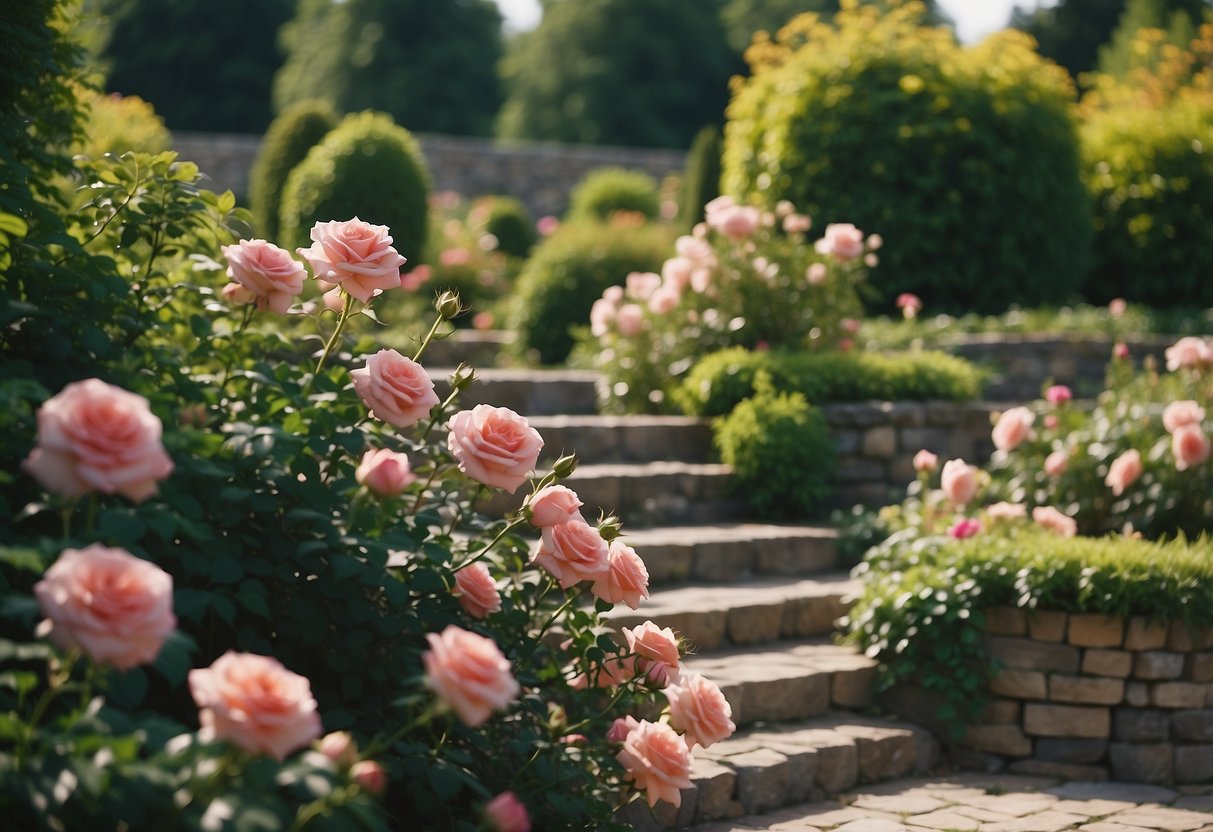
Creating a layered rose garden can add depth and color to your outdoor space. Start by planting taller rose varieties at the back. This gives them the spotlight and allows shorter plants to be seen.
In the middle layer, use medium-height roses. These will add volume and ensure a smooth transition between your tall and shorter roses.
Finally, place miniature roses or low-growing varieties at the front. This creates a beautiful cascading effect. For more tips, check out some stunning rose garden ideas.
9) Garden Pathway with Retaining Edges
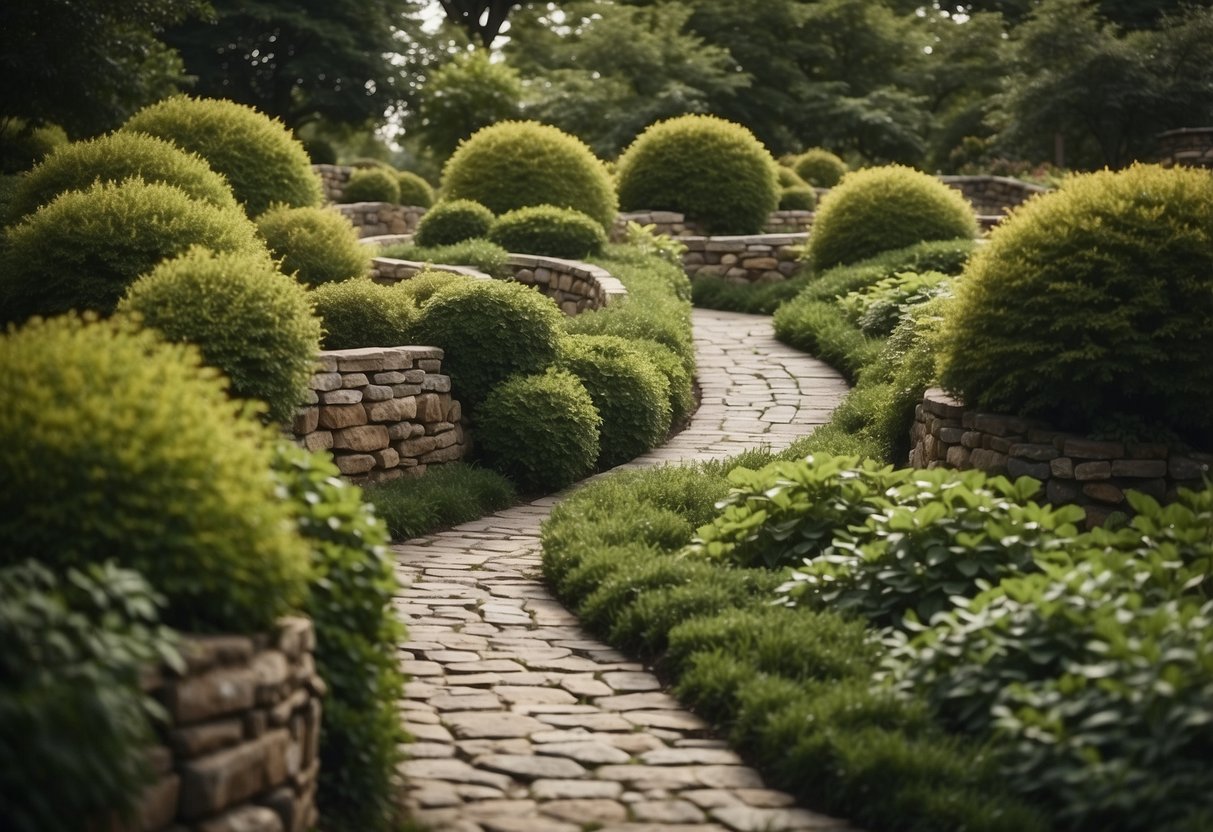
Creating a garden pathway with retaining edges adds charm and function to your space.
You can use materials like concrete blocks, bricks, or stones for the edges. This not only defines the pathway but also keeps soil and plants neatly contained.
A well-designed pathway makes it easier to navigate through your garden and enhances its overall look.
10) Colorful Flower Borders
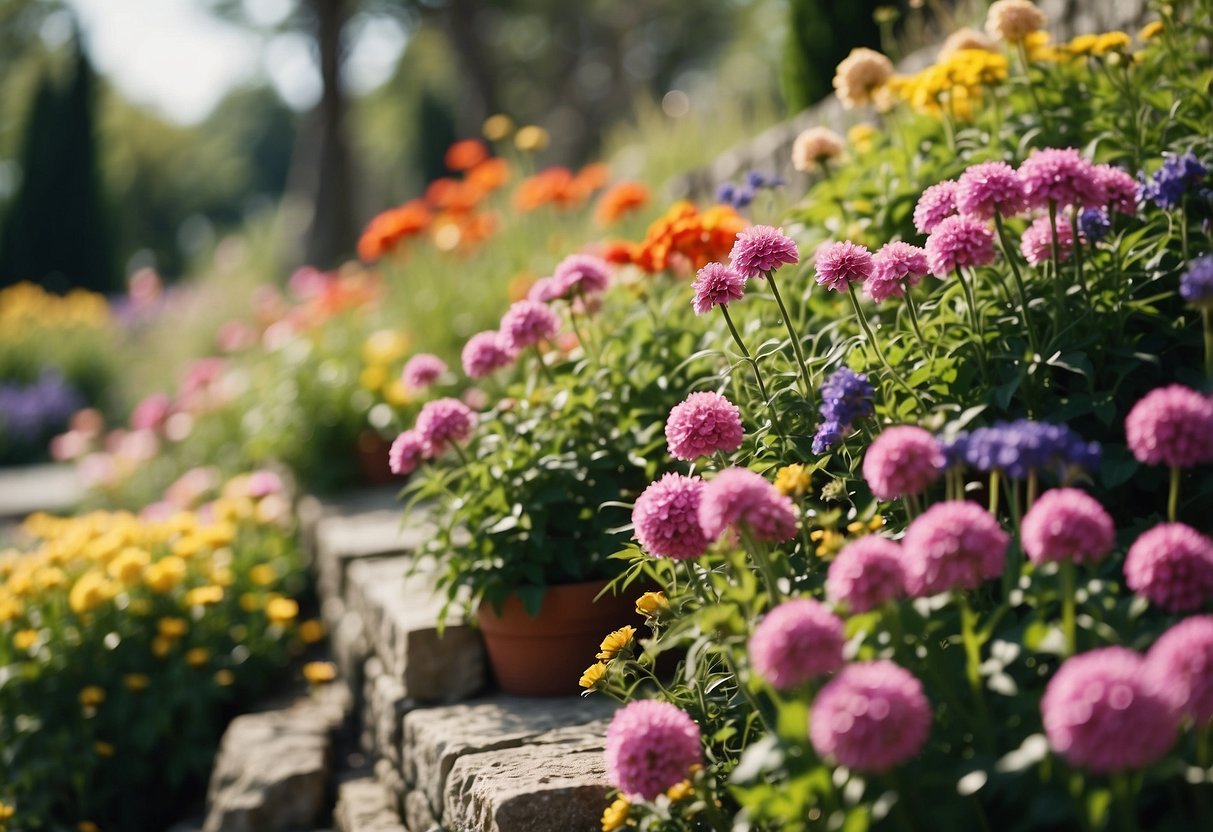
Creating colorful flower borders around your retaining walls can add a vibrant touch to your garden. Bright flowers like catmint, which grows 12 to 18 inches tall, look stunning when paired with the greenery of your retaining wall.
Mix in plants like common rosemary for a Mediterranean feel. This plant offers aromatic leaves and soft-blue flowers that attract bees, adding life to your garden.
By choosing a mix of perennials and annuals, you’ll ensure year-round color. Flowers like marigolds, petunias, and zinnias create a lively and cheerful atmosphere that brightens any outdoor space.
Benefits of Retaining Walls in Garden Design
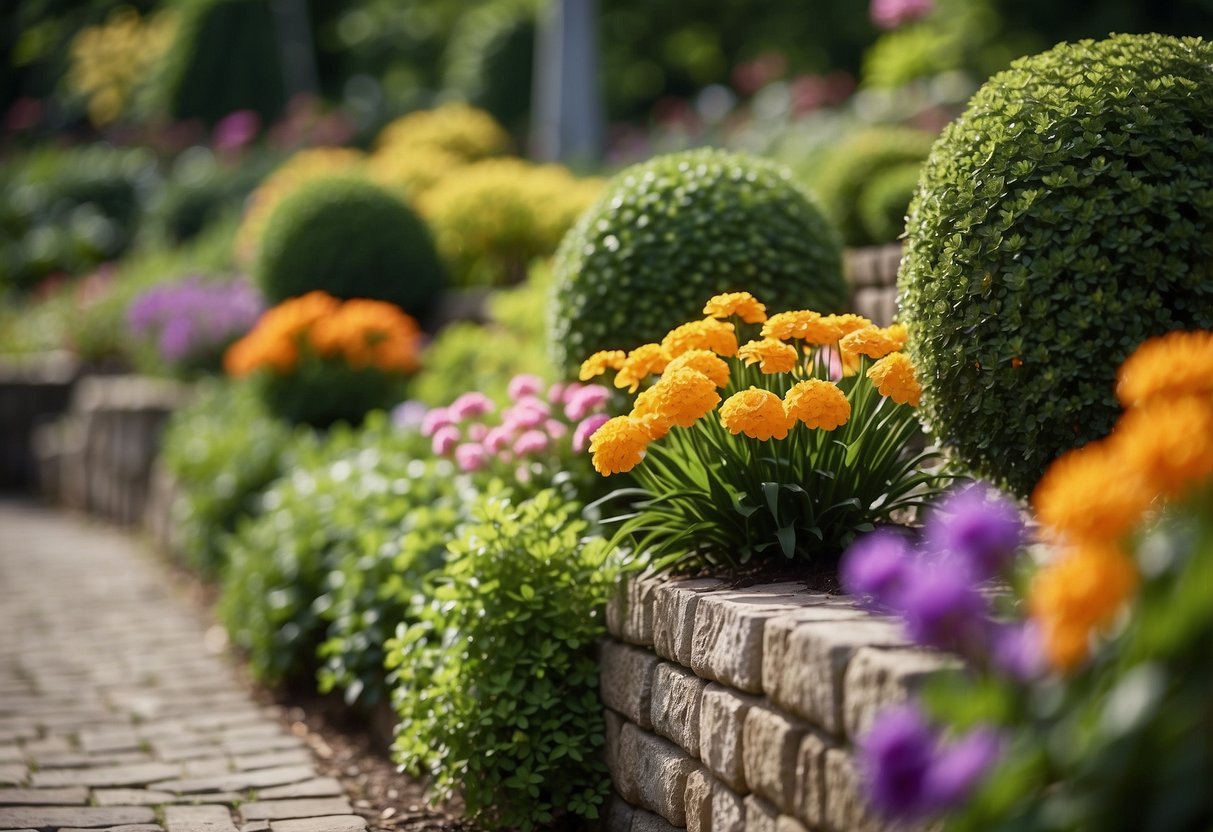
Retaining walls offer a range of benefits for your garden. They help prevent soil erosion, create levels for planting, and enhance the overall look of your outdoor space.
Erosion Control
Retaining walls are perfect for stopping soil erosion. If your garden is on a slope, rain can wash the soil away, making it difficult to grow plants. A retaining wall holds the soil in place, preventing this erosion.
By managing water drainage, these walls stop water from ruining your garden designs. Proper drainage systems behind the wall ensure that water doesn’t build up, which can cause soil and plant damage. This way, your garden stays healthier and cleaner.
Creating Levels
Creating levels in your garden can add depth and interest. Retaining walls let you build different planting areas at varying heights. This is especially useful if your yard is uneven.
These levels can be used for different types of plants or vegetables, making your garden more organized. You can have a lovely flower bed on one level and a vegetable garden on another. This setup makes gardening more enjoyable and visually appealing.
Enhancing Aesthetics
Retaining walls also enhance the look of your garden. They can be built from various materials like stone, wood, or concrete, each offering a unique style. A stone wall gives a natural, rustic feel, while a wooden one can look more casual and inviting.
Additionally, these walls can serve as seating areas during gatherings or offer a decorative touch with built-in planters. They help create defined spaces in your garden that are both functional and beautiful.
Types of Materials for Retaining Walls

Choosing the right material for your retaining wall is crucial for both function and style. The main options include natural stone, concrete blocks, and wooden walls. Each material has its own benefits and considerations.
Natural Stone
Natural stone is a popular choice for retaining walls due to its timeless beauty and durability. Stones like granite, limestone, and slate are common.
You can stack these stones to create a dry stack wall, which doesn’t require mortar. This makes it more flexible and easier to repair if individual stones shift.
Natural stone walls blend seamlessly into garden landscapes and offer a rustic, organic look. They’re also long-lasting and can handle significant weight.
One downside is that stone walls can be more expensive and labor-intensive to build compared to other materials. They might also require professional installation to ensure they are stable and safe.
Concrete Blocks
Concrete blocks are another versatile option for retaining walls. These blocks are often available in various shapes and sizes, making them easy to work with for different wall designs.
You can use concrete blocks to create straight or curved walls. They can be reinforced with steel bars and filled with concrete for added strength.
Concrete blocks are durable and resistant to weather, and they don’t rot or decay over time. They’re also generally more affordable than natural stone.
The installation process can be done as a DIY project, especially with interlocking blocks that don’t require mortar. However, reinforced walls may need professional construction for higher structures.
Wooden Retaining Walls
Wood adds a natural and cozy look to gardens. Common woods used are treated pine or cedar.
Treated lumber is resistant to rot and insects, which makes it suitable for outdoor use. Wooden walls are easier to install and can be more cost-effective.
You can build wooden retaining walls using timbers, planks, or even railroad ties. These can be anchored in the ground and built up to create terraces and garden beds.
Wood, while charming, tends to have a shorter lifespan compared to stone or concrete. Regular maintenance, such as sealing and treating the wood, can extend its life but may require ongoing effort from you.
Design Considerations

When planning a garden with retaining walls, it’s important to think about the height and stability of the walls, how to manage drainage, and which plants will thrive in your setting. These elements will help ensure a beautiful and functional garden.
Height and Stability
The height of your retaining wall greatly affects its stability and appearance. Shorter walls generally don’t need much reinforcement, but taller walls require more support. Retaining walls over four feet often need professional construction. Use materials like concrete blocks, bricks, or treated timbers for added strength.
Proper base preparation is crucial. A well-compacted base ensures the wall won’t shift over time. Also, stepped-back designs enhance stability by distributing weight evenly.
Use geogrid or tie-backs for additional reinforcement in taller walls. Make sure to check local building codes, as they may have specific requirements for wall height and construction methods.
Drainage Solutions
Managing water is essential in retaining wall projects. Without proper drainage, water can build up behind the wall, causing pressure and potential collapse.
Drainage pipes and gravel backfill help divert water away from the wall. Place perforated pipes at the base of the wall to channel water out. Adding gravel behind the wall improves water flow and reduces pressure.
Incorporate weep holes into the design. These small openings allow water to pass through the wall. Also, ensure the ground slopes away from the wall to prevent water from pooling. Effective drainage solutions will prolong the life of your retaining wall and prevent issues.
Choosing the Right Plants
Selecting the right plants enhances the beauty and functionality of your retaining wall. Consider plants suited to your climate and soil conditions.
Ground cover plants like creeping thyme or sedum can thrive on vertical surfaces and prevent soil erosion. They also require minimal maintenance. For a colorful look, choose flowering perennials like lavender or coreopsis.
Root systems are vital. Plants with deep, spreading roots help stabilize the soil behind the wall. Native plants usually adapt well and require less care. Besides aesthetics, think about maintenance. Low-maintenance plants reduce the time and effort needed to keep your garden looking great.







